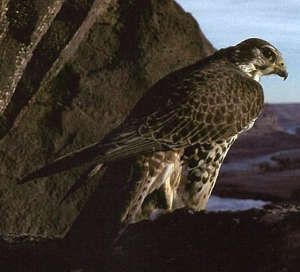Birds of prey, also known as raptors, play a crucial role in maintaining the balance of ecosystems. These majestic creatures are top predators in their natural habitats, controlling populations of smaller animals and ensuring the health of the environment. However, raptors are facing numerous threats that are putting their populations at risk. It is essential to prioritize their conservation to ensure their survival for future generations.
The Importance of Raptors in the Ecosystem
Raptors are apex predators, meaning they are at the top of the food chain. As such, they play a vital role in regulating the populations of prey species, preventing overpopulation and maintaining biodiversity. By controlling the numbers of rodents, snakes, fish, and other small animals, raptors help maintain a healthy balance in ecosystems.
Additionally, raptors are indicators of overall ecosystem health. Their presence or absence can signal changes in the environment, such as pollution levels, habitat destruction, or declining prey populations. Monitoring raptor populations can provide valuable information about the state of the environment and help guide conservation efforts.
Threats to Raptors
Raptors face a myriad of threats that are endangering their populations. Habitat loss and fragmentation due to urbanization, agriculture, and deforestation are primary concerns for many species. As their natural habitats disappear, raptors are forced to compete for limited resources and may struggle to find suitable nesting sites.
Illegal poaching and hunting also pose a significant threat to raptors. Some species are targeted for their feathers, bones, or other body parts, which are used in traditional medicine or for decorative purposes. Hunting for sport or pest control has led to a decline in raptor populations in some regions.
Furthermore, pollution from pesticides, lead poisoning from contaminated prey, and climate change all have negative impacts on raptors. These factors can weaken immune systems, impair reproduction, and lead to population declines. Conservation efforts must address these threats to ensure the long-term survival of raptors.
Conservation Strategies
Protecting raptors in the wild requires a multi-faceted approach that addresses the various threats they face. One of the most critical steps is the preservation and restoration of their habitats. This includes establishing protected areas, such as national parks and wildlife reserves, where raptors can thrive without human interference.
Education and public awareness are also essential for raptor conservation. By teaching people about the importance of raptors in the ecosystem and the threats they face, we can foster a greater appreciation for these birds and inspire action to protect them. Community engagement programs, such as birdwatching tours or volunteer opportunities, can involve local residents in conservation efforts.
Research is another crucial component of raptor conservation. Studying raptor populations, behaviors, and habitats can provide valuable data for conservation planning and management. By monitoring raptor populations over time, scientists can assess the effectiveness of conservation measures and make informed decisions to ensure their long-term survival.
Conclusion
Raptors are essential components of healthy ecosystems, and their conservation is paramount to maintaining biodiversity and ecological balance. By addressing the various threats they face and implementing conservation strategies, we can ensure that raptors continue to soar across the skies for generations to come. It is up to all of us to protect these magnificent creatures and safeguard their future in the wild.
